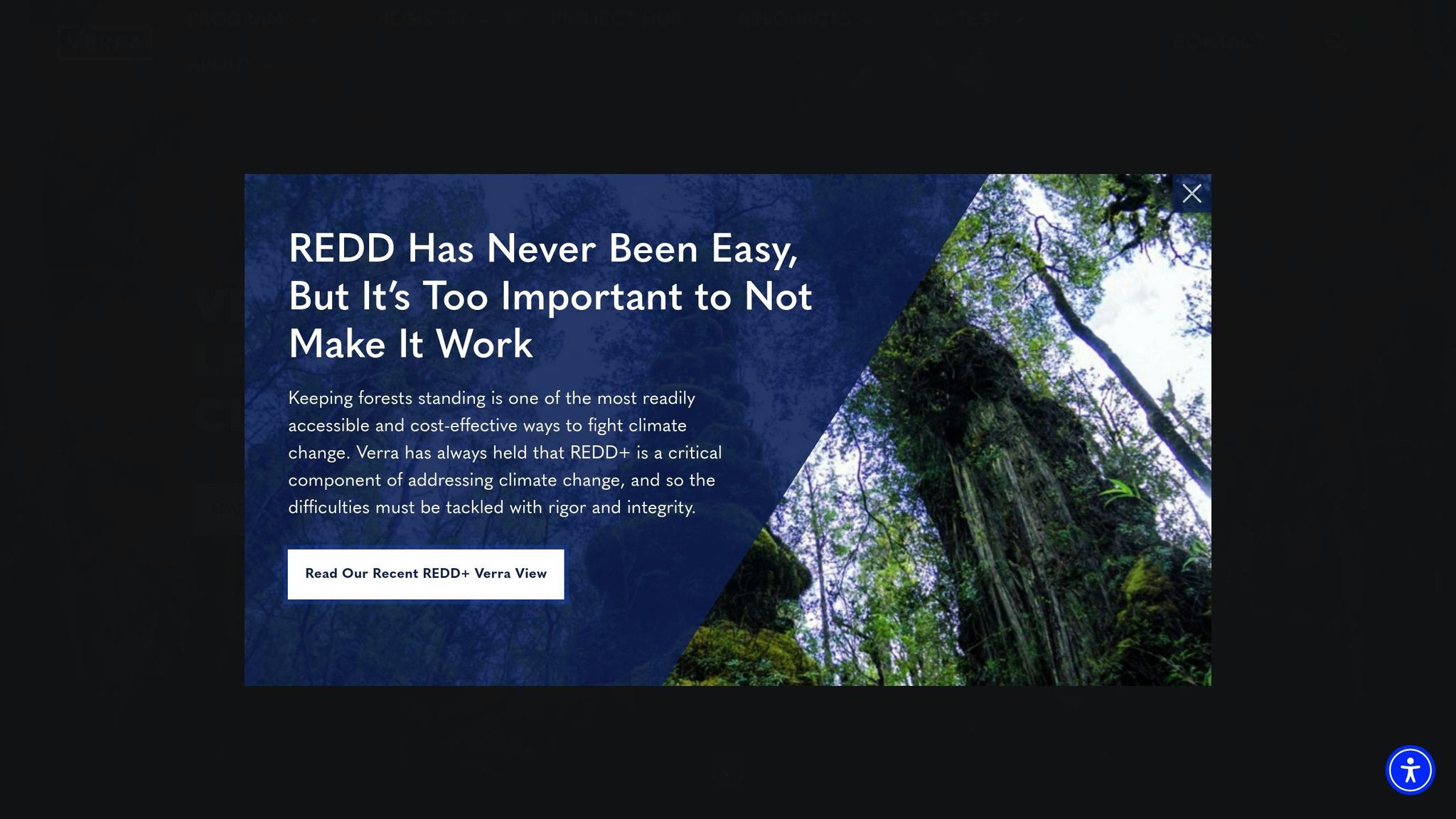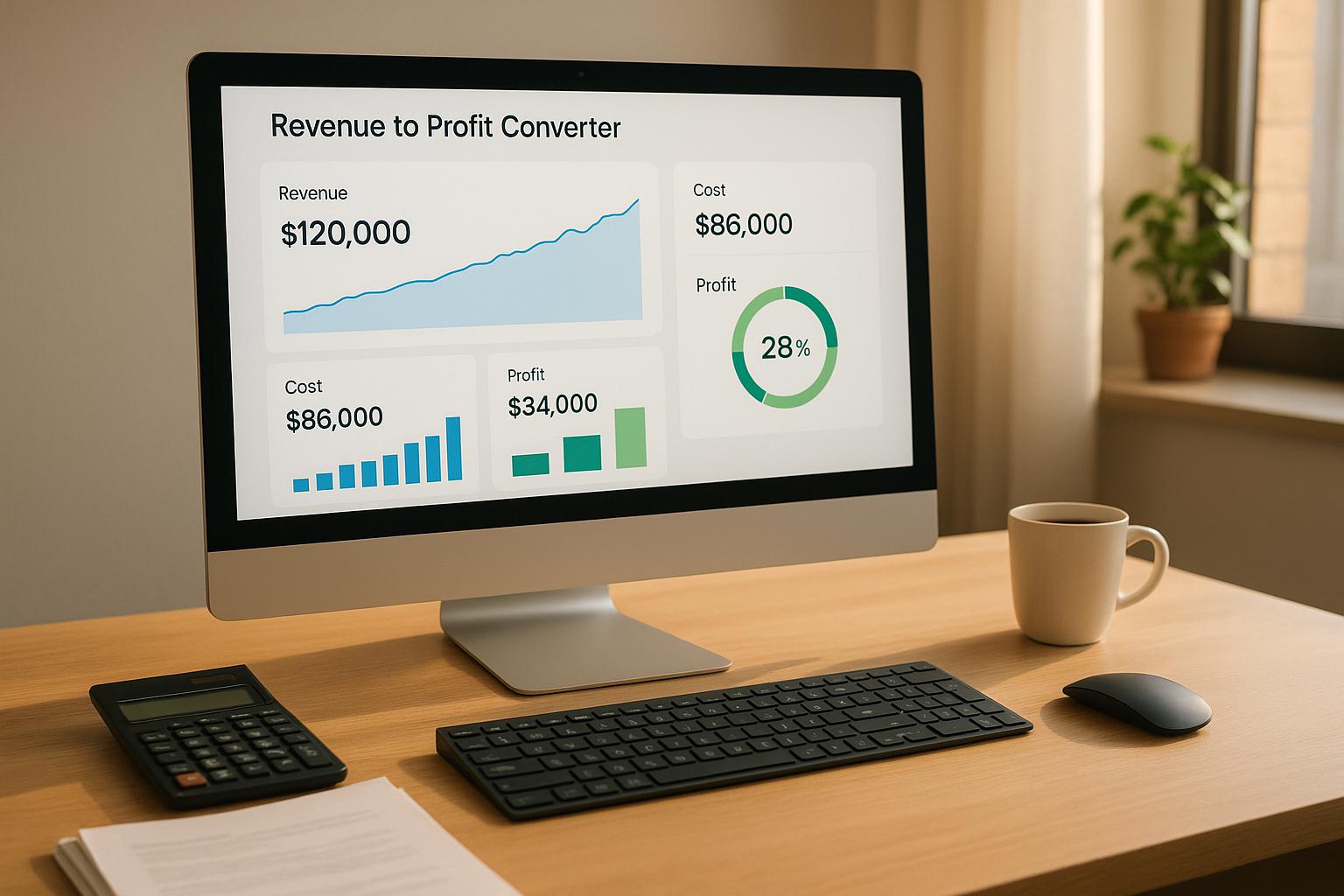Carbon Credit Vintage: Study on Valuation Impact

Carbon credit vintage refers to the year a greenhouse gas reduction or removal activity occurred and was verified. This timestamp plays a key role in the value of carbon credits. Newer vintages (2021–2023) are more expensive, commanding a 217% premium over older ones (2016–2020). Buyers prioritize recent vintages due to regulatory requirements, corporate reporting needs, and perceptions of quality. However, older credits, especially from high-quality projects, can still offer strong climate benefits and cost advantages.
Key insights:
- Newer credits (e.g., 2024) sell for $10/ton, while older ones (2018) range from $5–$8/ton.
- Programs like CORSIA and California’s Cap-and-Trade enforce vintage eligibility rules (e.g., last 5 years).
- Older vintages may still deliver strong results, especially for well-monitored projects.
For businesses, balancing vintage with project quality is critical. Focusing solely on newer credits can lead to overpaying or missing out on proven, impactful projects.
Study Results: How Vintage Year Impacts Carbon Credit Values
Data reveals that the vintage year of carbon credits plays a major role in determining their market value in the U.S. Credits from 2021–2023 command a staggering 217% premium compared to those from 2016–2020. Meanwhile, older vintages often sell at discounted rates, influencing both project economics and investor returns.
How Vintage Year Affects Market Prices
Carbon credits issued between 2021 and 2023 are priced significantly higher than those from earlier periods. For instance, a 2024 renewable energy credit typically averages around $10 per ton, while a 2018 credit might sell for just $5 to $8 per ton. This price gap is largely driven by limited availability of newer credits and increasing demand fueled by net-zero goals.
The pricing trend across vintage years follows a clear pattern. Credits from as far back as 2010–2011, despite being tied to well-established projects with proven performance, are generally the least expensive. On the flip side, the most recent vintages - produced within the past two to three years - consistently fetch the highest premiums.
These price variations significantly shape buyer behavior, as outlined below.
Why Buyers Prefer Newer Credits Over Older Ones
The preference for recent vintages is rooted in both practical and regulatory considerations, which influence how businesses integrate these credits into their sustainability plans.
Regulatory requirements play a big role. Programs like CORSIA mandate the use of credits from 2021 onward for compliance, and state-level cap-and-trade systems often limit eligibility to credits issued within the last five years. These rules make newer vintages a necessity for many buyers.
Corporate reporting cycles also steer demand toward recent credits. Companies preparing annual sustainability reports tend to choose credits that align with their current or recent emissions data. For example, a business reporting on its 2024 emissions will naturally prioritize 2023 or 2024 vintage credits to ensure their offsets match the same reporting period.
Perceptions around quality further amplify the demand for newer credits. Buyers often assume that recent vintages reflect updated methodologies, better monitoring, and stricter oversight. However, this belief isn't always backed by data, as some highly impactful projects come from older vintages.
Interestingly, while 87% of companies historically sought low-cost offsets, many now pay premiums for newer credits due to regulatory and reporting pressures.
Financial planning also factors into vintage preferences. Businesses with multi-year climate goals often prefer to buy credits closer to their planned retirement dates. This approach not only aligns carbon accounting with financial reporting but also minimizes the risk of regulatory changes that could affect credit eligibility down the line.
How Carbon Credit Vintage Works: Standards and Rules
The way carbon credit vintage is assigned can vary significantly, impacting both project developers and credit buyers. Understanding these differences is key to navigating how evolving standards and rules influence the market.
Vintage Rules at Verra, Gold Standard, and Puro Standard

Each standard approaches vintage assignment differently, reflecting unique priorities and methodologies:
- Verra defines vintage as the time period when emission reductions or removals actually occur. Credits are often issued in batches that may span several years. For example, a reforestation project could generate credits over multiple years, all verified during a single phase.
- Gold Standard ties vintage to the year when the emissions reduction is verified. However, vintage is not a primary focus for this standard. Instead, it emphasizes factors like additionality and permanence, meaning the quality of the project often outweighs the specific timing of the reductions.
- Puro Standard takes a more straightforward approach, assigning vintage based on the final year of the activity. For instance, a project spanning multiple years would see all its credits marked with the last year, potentially masking the timing of earlier environmental benefits.
| Standard | Vintage Assignment Method | Key Characteristics |
|---|---|---|
| Verra | Period when reductions occur | May issue multiple vintages in one batch |
| Gold Standard | Year of verified reduction | Focuses more on project quality |
| Puro Standard | Final year of activity | Simplified but less detailed approach |
These differences can create hurdles for both buyers and developers. For example, a 2023 Verra credit might represent reductions from that year, while a 2023 Puro Standard credit could signify the conclusion of a multi-year project. This variability often requires buyers to conduct extra research to fully understand the timing and impact of the credits they’re purchasing.
How New Rules Change Vintage Assignment
Recent regulatory updates are pushing for more precise vintage assignments, shaking up traditional practices. For instance, Verra is gradually moving toward issuing credits tied to specific years rather than multi-year batches. This aligns with buyers’ growing preference for transparency and clear timelines.
While this shift improves clarity for buyers and better supports annual reporting, it also introduces challenges. Verification costs rise, credit sales may be delayed, and project cash flows - especially for long-term efforts like forestry - can take a hit. These hurdles make it harder for developers to maintain steady financing.
Market trends reflect how these changes are impacting credit availability. The demand for newer vintages has tightened supply, while older credits (such as the nearly 160 million non-retired credits from pre-2016) are seeing waning interest. As a result, newer vintages often command a premium, even when older credits come from well-established, high-integrity projects.
To adapt, many developers are rethinking their strategies. Some are investing in real-time monitoring technologies to enable more frequent verifications, while others are restructuring financial plans to account for delayed revenues. For businesses, understanding how vintage rules affect credit availability and pricing is critical - careful planning is essential to navigate these shifts in the carbon market effectively.
Other Factors That Affect Credit Value Besides Vintage
While vintage plays a role in determining the value of carbon credits, it's far from the only factor. Other elements, like the project’s quality and impact, significantly influence how credits are valued and perceived.
Measuring Credit Quality Through Impact and Outcomes
The quality of a carbon credit extends beyond its vintage and is heavily influenced by the project’s impact and durability. One of the most important considerations is additionality - a measure of whether the emissions reductions would have occurred without the carbon project. If a project fails to demonstrate strong additionality, its credits are often devalued, regardless of the year they were issued.
Assessing additionality involves analyzing baseline scenarios, undergoing third-party validation, and implementing ongoing monitoring to ensure the project delivers real environmental benefits. For instance, a wind farm project must prove that it wouldn’t have been financially feasible without the revenue from carbon credits, ensuring the reductions represent genuine climate action.
Permanence is another critical factor. This measures how long the carbon reduction or removal will stay out of the atmosphere. Projects with higher permanence are often valued more because they offer long-term climate benefits. For example, forest projects with strong monitoring systems, buffer pools to mitigate potential losses, and detailed management plans are typically priced higher than those lacking these safeguards.
Co-benefits also play a key role in determining credit value, particularly for nature-based projects. Credits tied to initiatives that enhance biodiversity, improve water quality, or contribute to local economic development often command higher prices. These added benefits align with the growing demand from buyers who prioritize environmental, social, and governance (ESG) goals and seek to enhance their reputational standing.
| Quality Factor | Impact on Valuation | Key Assessment Criteria |
|---|---|---|
| Additionality | High - essential for credit validity | Baseline analysis, financial and regulatory barriers |
| Permanence | High - determines long-term impact | Risk mitigation, monitoring systems, buffer mechanisms |
| Co-benefits | Medium to High - increases buyer appeal | Biodiversity gains, community impact, social outcomes |
Why Older Credits Don't Always Lose Value
Although newer vintages are often favored in the market, this preference doesn’t always align with the actual environmental impact or quality of a project. Research by Calyx Global reveals that some of the highest-quality projects were tied to credits from as far back as 2010 or 2011, challenging the assumption that newer credits are inherently superior.
Older credits from well-executed projects can retain or even grow in value over time. Proven impact becomes more apparent as projects demonstrate their effectiveness through years of monitoring and verification. Additionally, the cumulative climate benefit of older credits adds to their appeal, as early reductions contribute to long-term environmental improvements. For example, forest projects often show increased biodiversity and stronger community benefits after years of operation and local engagement.
Older projects also benefit from established methodologies that have been tested and refined over time. These projects have navigated market scrutiny and regulatory shifts, proving their resilience and quality. Many have improved their practices based on years of experience, leading to better outcomes.
Discounting older credits solely because of their vintage can discourage early investment in well-proven projects. Companies that focus only on newer vintages risk overlooking established projects with a track record of effectiveness, while potentially overpaying for untested credits that may not deliver long-term value.
For businesses refining their carbon credit strategies, Phoenix Strategy Group offers expert guidance to ensure investment decisions balance sustainability goals with financial considerations. By focusing on credit quality rather than vintage alone, companies can make more informed and impactful choices.
These factors provide a foundation for understanding how credit strategies can adapt to evolving U.S. regulatory landscapes.
sbb-itb-e766981
U.S. Regulations and Compliance Rules for Different Vintages
In response to evolving pricing trends and climate goals, U.S. regulations have tightened the criteria surrounding vintage carbon credits. These rules play a key role in shaping climate strategies, as they determine which credits are eligible for compliance under various programs. By setting vintage requirements, these programs influence not only market value but also strategic decision-making for businesses operating in carbon markets.
Vintage Requirements in U.S. Climate Programs
The Carbon Offsetting and Reduction Scheme for International Aviation (CORSIA) has some of the clearest vintage rules in the market. Under this program, only credits with vintages from January 1, 2016, onward are valid for compliance. This cutoff aligns with the goals of the Paris Agreement, emphasizing recent climate actions. As a result, U.S. aviation companies cannot use credits generated before 2016 to meet CORSIA requirements.
At the state level, programs like California's Cap-and-Trade impose their own vintage limits. Typically, this initiative requires credits to be generated within the past five years. The goal is to ensure that offsets reflect current and additional efforts to reduce emissions, rather than relying on older, potentially less impactful credits.
On a global scale, the Paris Agreement Article 6 framework highlights the importance of recent credits in international markets. While the guidance is still evolving, the emphasis on newer vintages influences how companies approach compliance, pushing them toward credits that demonstrate more recent climate contributions.
Here’s a quick look at how different programs handle vintage eligibility and their impact on the U.S. market:
| Program | Vintage Eligibility | Impact on U.S. Market |
|---|---|---|
| CORSIA | 2016 onward only | Pre-2016 credits are entirely excluded |
| California Cap-and-Trade | Typically within last 5 years | Older credits are less desirable for compliance |
| Paris Agreement Article 6 | Draft guidance favors recent vintages | Rules are still being finalized |
These vintage restrictions significantly influence market dynamics. Credits that meet these eligibility criteria tend to command higher prices, reflecting both regulatory demand and compliance pressures.
For businesses and investors, understanding these rules is critical when evaluating carbon credit portfolios and planning sustainability strategies. Companies like Phoenix Strategy Group specialize in helping growth-stage businesses navigate these regulatory complexities. Their expertise in financial planning and analysis provides valuable insights into how vintage requirements affect credit valuation and long-term compliance planning. This guidance is crucial for staying ahead in a rapidly evolving carbon market.
Key Points for Businesses and Investors
Research into carbon credit vintage highlights some crucial insights that could change how businesses and investors manage their carbon portfolios. One major takeaway? Market prices don’t always reflect true environmental impact, creating both risks and opportunities for savvy buyers.
Newer vintages can command premiums of up to 217% compared to older credits, but higher prices don’t always mean better environmental results. In fact, older vintages - especially those from 2010–2011 - are often tied to high-integrity projects, challenging the idea that newer credits are inherently superior. This opens the door for strategic adjustments to carbon portfolios.
For investors who understand the market, there’s a chance to benefit from these misconceptions by incorporating undervalued older vintages into their strategies. Credits from long-established projects frequently demonstrate well-documented benefits for the climate, biodiversity, and local communities - advantages that newer credits might not yet prove. This approach can cut costs without sacrificing environmental goals.
However, due diligence is critical when assessing vintage alongside project quality. Instead of using the vintage year as a shortcut for quality, businesses should focus on project integrity ratings, verification standards, and documented outcomes. A careful evaluation of these factors ensures investments align with both financial limits and climate targets.
Diversifying across vintages is also essential to manage risks. A balanced portfolio can help mitigate market volatility, ensure steady financing, and address both immediate compliance needs and long-term sustainability goals. Devaluing older credits across the board not only raises investment risks but could also discourage future project development, potentially shrinking the voluntary carbon market over time.
Regulations add another layer of complexity. Policies like CORSIA impose vintage eligibility rules that can drive up credit prices, making it crucial for businesses to balance compliance with cost management strategies.
For companies still finding their footing in this complex market, partnering with experienced advisors can make all the difference. Phoenix Strategy Group offers expertise in financial planning and analysis, helping businesses navigate vintage requirements, credit valuation, and compliance planning. Their guidance ensures companies can stay ahead in the evolving carbon market while making decisions that align with both financial and environmental priorities.
Ultimately, vintage is just one piece of the puzzle. The key takeaway? Never rely solely on vintage when selecting carbon credits. Instead, prioritize project quality, robust verification, and measurable climate impact. By taking advantage of market inefficiencies, businesses can build cost-effective, high-integrity portfolios that meet their goals.
FAQs
What are vintage rules in carbon credit standards like Verra, Gold Standard, and Puro Standard, and how do they affect valuation?
Vintage rules pertain to the year a carbon credit is created and certified, playing a key role in determining its market value. Standards like Verra, Gold Standard, and Puro Standard each have their own criteria for defining and managing vintages. These can include timelines for eligibility, certification processes, and market preferences.
The age of a vintage matters because older credits are often seen as less relevant or desirable in markets that focus on recent emissions reductions. Grasping these distinctions is crucial for businesses aiming to navigate carbon credit markets effectively and refine their strategies for trading or meeting compliance goals.
Why are newer carbon credit vintages often more expensive, and when might older vintages be a better investment?
Newer carbon credit vintages generally come with a higher price tag. Why? They tend to align better with today's regulatory standards, market demands, and environmental objectives. Plus, they incorporate recent improvements in verification methods, making them especially appealing to buyers who value transparency and strict compliance.
That said, older vintages shouldn't be overlooked. They often come at a lower price point and can still fulfill the requirements for certain projects or buyers. For organizations with more flexible sustainability goals, these older credits can be a budget-friendly way to offset emissions. Deciding between newer and older vintages boils down to your specific goals, financial considerations, and compliance needs.
What should businesses consider when choosing between older and newer carbon credit vintages for their sustainability goals?
When choosing between older and newer carbon credit vintages, there are a few critical points to weigh. Newer vintages typically come from recent projects, which are more likely to reflect up-to-date sustainability practices and technologies. On the other hand, older vintages might be easier on the budget but could pose challenges in meeting today’s stricter standards.
It's also important to look at the credibility of the organization behind the credits, the actual impact the project has on reducing emissions, and how well the vintage aligns with your company’s environmental, social, and governance (ESG) goals. Striking the right balance between cost, reputation, and regulatory compliance is crucial to making the best decision.




